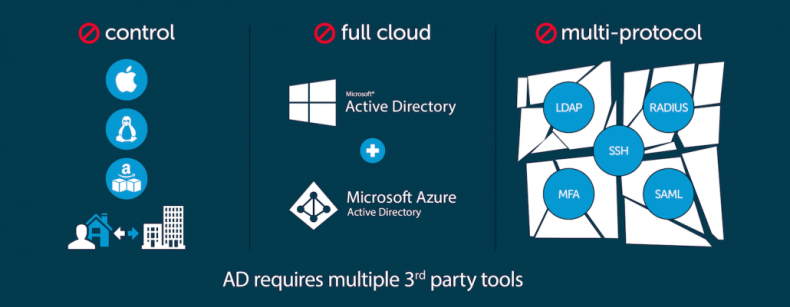Source: National Cyber Security – Produced By Gregory Evans
An Active Directory® bridge is a tool that allows organizations to continue using Microsoft® AD as their authoritative source of identity, while extending it to systems, apps, and protocols not natively managed by Active Directory (AD). Other terms for this type of solution are an Active Directory extension or a cloud identity bridge.
Below you’ll find a more detailed definition, along with some background on the directory services landscape and why so many organizations are looking for alternatives to the conventional AD setup. If you’re looking for information specifically on JumpCloud’s AD bridge solution, called AD Integration, visit its product page for a full run-down of features and screenshots.
Why Extend Active Directory?
The IT world has changed dramatically over the past few years. If you look back to the turn of the century, you would see a primarily Windows on-prem environment. Just about everyone had a Windows system. They walked into the office each day, sat down at their desks, plugged into a private network, and authenticated their identities against an on-prem Active Directory domain controller. Microsoft stored user identities, which enabled seamless access to resources like Windows-based applications, productivity platforms, and storage devices to name a few – all of which were stored on private Windows servers in a data center somewhere on-site.
Fast forward to today and things look very different. Disparate operating systems (e.g Windows, Mac, and Linux), wireless access points (WAPs) and networks, remote users, and cloud resources are preferred. While these and many other things have changed, one thing has stayed the same – namely, Active Directory. So how does AD fit into the modern IT ecosystem?
Limitations of AD

Managing non-Windows systems, applications, and cloud resources has never been AD’s forté. Yet, many organizations still leverage AD for directory services. This is especially true for older organizations with more mature IT infrastructures. The challenge for these types of organizations is extending user credentials to manage resources that fall outside of the Active Directory (Read more…)
Source link
The post #cybersecurity | #hackerspace |<p> What is an Active Directory Bridge? <p> appeared first on National Cyber Security.
